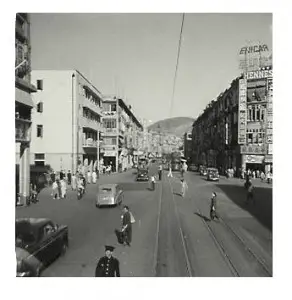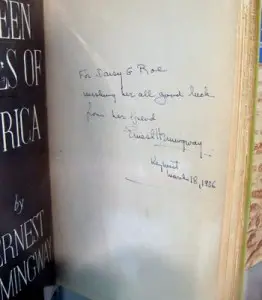What do you do when you are given a Library that has no books?
And suppose this library was surrounded by miles and miles of nothing but rice paddies? And nobody but your immediate compatriots could speak English, or if they did, it was pidgeon with very few words.
Well that was what faced me when I was transferred to a Radar Base in Hong Kong.
 Not the Hong Kong of shiny buildings and jazzy night clubs, but the Hong Kong of the New Territories, nose to nose with the Chinese Communist Army. Thirty miles of hairpin mountain roads, so narrow that sometimes vehicles had to stop at a wide part so people could drive past you. At least an hours trip on a nasty dirty un-airconditioed bus with Chinese, chickens and small pigs..The only source of recreation was the NAAFI, the group that took care of the off duty servicemens. They managed the canteens, sold cigarette and beer and what ever other things you might need like pens and paper, shoe polish et al. At this Unit it was bare, just one Quonset hut as a canteen come pub, no tables or chairs, not even a dart board. One little hatch in the wall where everything was purchased.
Not the Hong Kong of shiny buildings and jazzy night clubs, but the Hong Kong of the New Territories, nose to nose with the Chinese Communist Army. Thirty miles of hairpin mountain roads, so narrow that sometimes vehicles had to stop at a wide part so people could drive past you. At least an hours trip on a nasty dirty un-airconditioed bus with Chinese, chickens and small pigs..The only source of recreation was the NAAFI, the group that took care of the off duty servicemens. They managed the canteens, sold cigarette and beer and what ever other things you might need like pens and paper, shoe polish et al. At this Unit it was bare, just one Quonset hut as a canteen come pub, no tables or chairs, not even a dart board. One little hatch in the wall where everything was purchased.
It was Summer with the temperature as high as 110 degrees so the working hours were from 5 am to noon, at which time we were supposed to take a siesta. Our sleeping and living quarters were also Quonset huts, no radios, air conditioning, TV or any other amenities. The CO had seen my RAF History and noticed my past as Librarian in a couple of bases and so he was delighted to foist the title in to me. What he didn’t mention that the Library was a divided off part of the canteen. All it consisted of were a couple of chairs, a table, and bookshelves. Empty!
“Where are the books,” I inquired.
“Don’t know old boy, suppose you’ll have to drum up that part yourself.”
And that was that.
My first try was at an Army Base quite close, but all I got there was that Army Materials could not be transferred to the RAF without permission and they weren’t about to put themselves out about that – too much paperwork. Apparently the RAF was not liked by our boys in Khaki.
I tried Headquarters at Kai Tak and their answer was that we were a Transit Unit and not entitled to Books. Transit meant a base where you would be shuttled to and wait for your next assigment, but this place was definitely not that.

